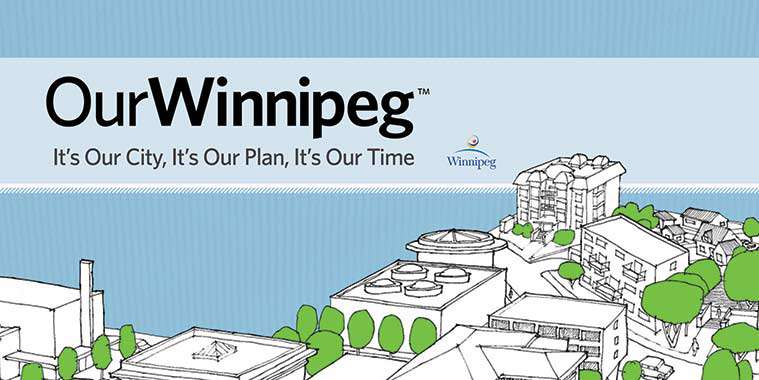by Peter Squire
Winnipeg and the surrounding RMs have both experienced significant population increases when you compare the 2011 to 2016 consensus. Predictions by the Conference Board of Canada are for continued strong population increases and emerging trends, such as this, need to be factored into the review of the City of Winnipeg’s Master Plan – OurWinnipeg. OurWinnipeg builds on strategies for 25-year municipal development plan which is sustainable and sets out a high quality of life for its citizens.
One strategy that is an important part of OurWinnipeg is Complete Communities — Winnipeg’s guide to land use and development. It speaks to planning for future growth with questions around accommodating growth such as: What is the capacity of your existing infrastructure and what are your priorities for new infrastructure to ensure priority areas for future development can be realized? Are you aligning transportation routes and servicing of employment lands to enable the economic growth and jobs that a growing population will require? Can brownfield sites be remediated and put back into productive use? Is the appropriate zoning in place to protect employment lands from being used for other purposes not originally intended? What development and permit approval processes are we implementing to respond in a timely manner to market demand for serviced land and building expansions?
In direct connection to the employment and commercial lands section of Complete Communities, the City conducted an Employment and Commercial Lands Study which was released this year. It is a comprehensive review of the City’s employment and commercial land needs to 2036 prepared within a broad context of the long-term economic outlook for the Winnipeg METRO Region and the Province of Manitoba.
A main take-away from this study is consultation with stakeholders so actions are dealt with promptly and effectively.
Other than key industry land developers, commercial REALTORS® and RM officials, one wonders how RMs are successful at bringing on serviced employment land opportunities to compete with the City of Winnipeg.
As the Study states, “A key competitive issue for the City of Winnipeg is its limited supply of serviced employment land on the market compared to the surrounding RMs in the Manitoba Capital Region. The City of Winnipeg has approximately 19 hectares of serviced employment land on the market and an additional 65 hectares of employment land soon to be serviced (municipally-owned land). As a comparison, the surrounding RMs have approximately 116 hectares of serviced employment land and approximately 82 hectares planned for future servicing on the market.”
2018 WinnipegREALTORS® commercial division chair, Trevor Clay, weighed in on this point. “As a result of the City unable to make serviced and zoned industrial land available for development, we are seeing rapid growth occur in the rural municipalities surrounding Winnipeg. Efficient approval processes and lower land costs in the Winnipeg METRO Region are providing access to opportunities that simply do not exist in the City.”
“What are we doing to stem the tide of missed opportunity? We are seeing a new 100 acre industrial park in the RM of Rosser and commercially-speaking not much development outside the city of Winnipeg. This translates to a lost commercial tax base.”
A second take-away from the study is to act immediately on the recommendation to develop detailed employment lands competitive analysis. This one is particularly germane given how surrounding RMs are well positioned to gain more employment land absorption at the expense of the City of Winnipeg. It suggests this can be done by examining the City and comparator surrounding municipalities through a series of pro-forma financial analyses. As the study explains in this recommendation, “Such an analysis would allow conclusions to be drawn as to the types and location of industrial and office development where the City of Winnipeg is most and least cost competitive from a real estate cost perspective.”
A third one is to fully understand where the City of Winnipeg stands versus surrounding RMs and other cities on its employment lands competitiveness is for the City. And to provide clear direction with respect to developer responsibilities for internal infrastructure cost, and includes aligning their capital budgets with infrastructure investment and seeking out public-private partnerships opportunities.
What it also signals is the City of Winnipeg needs to hold on imposing impact fees on new industrial land development and to do a detailed financial analysis.
It also recommends regular monitoring of employment and commercial land needs to assist in longer-term planning and forecasting.
The study recognizes the downtown as major office node for Winnipeg (e.g. True North Square) and encourages more effort to promote downtown in this regard.
On the commercial lands side of the study, it predicts there is a surplus of commercial lands available to meet forecast demand for retail space through to 2036. It also recommends restricting major retail development on industrial zoned lands. This thrust of protecting employment lands from other uses is a major thrust of this study (e.g. retain Public Markets major redevelopment site as employment lands).



